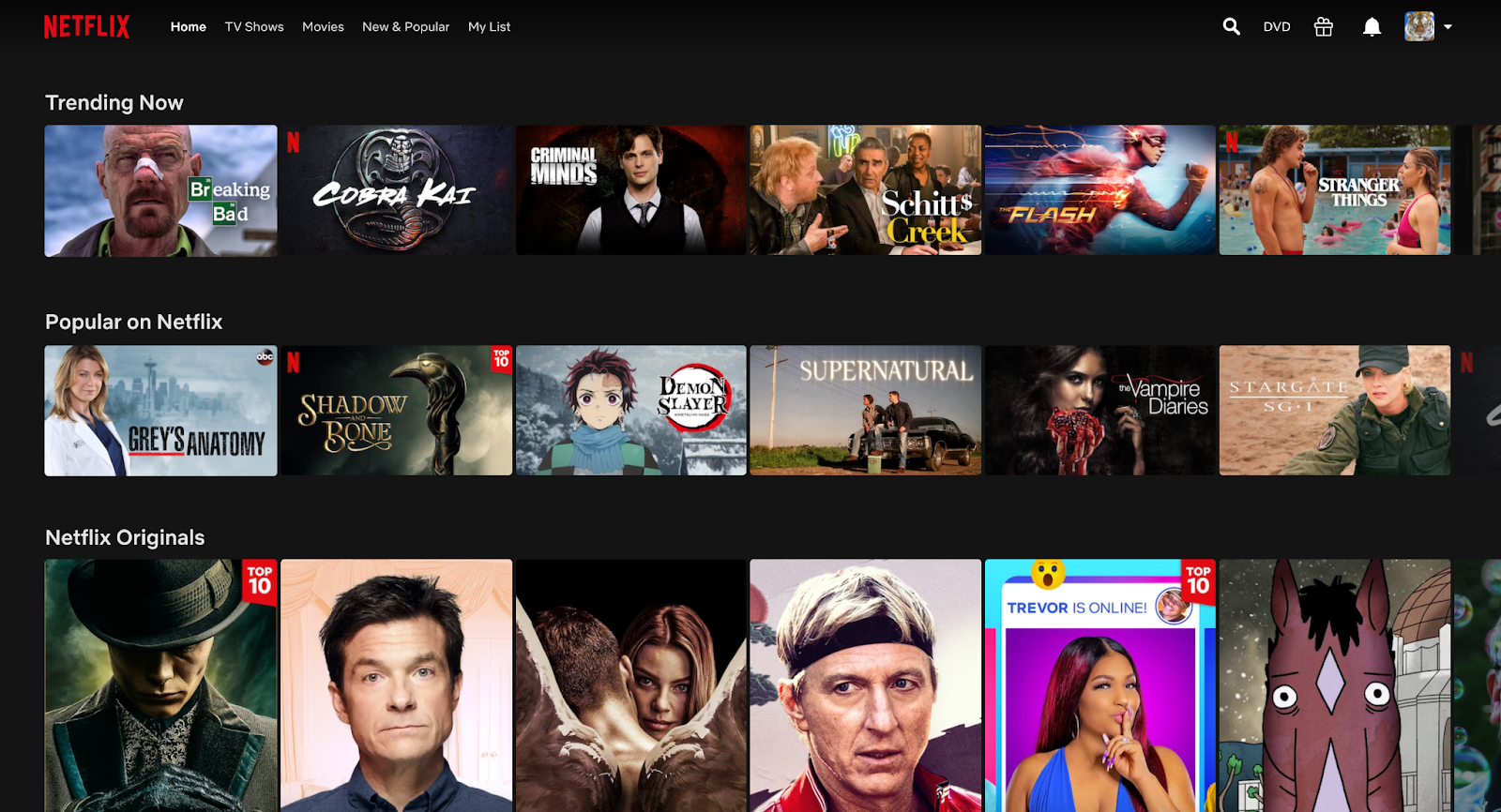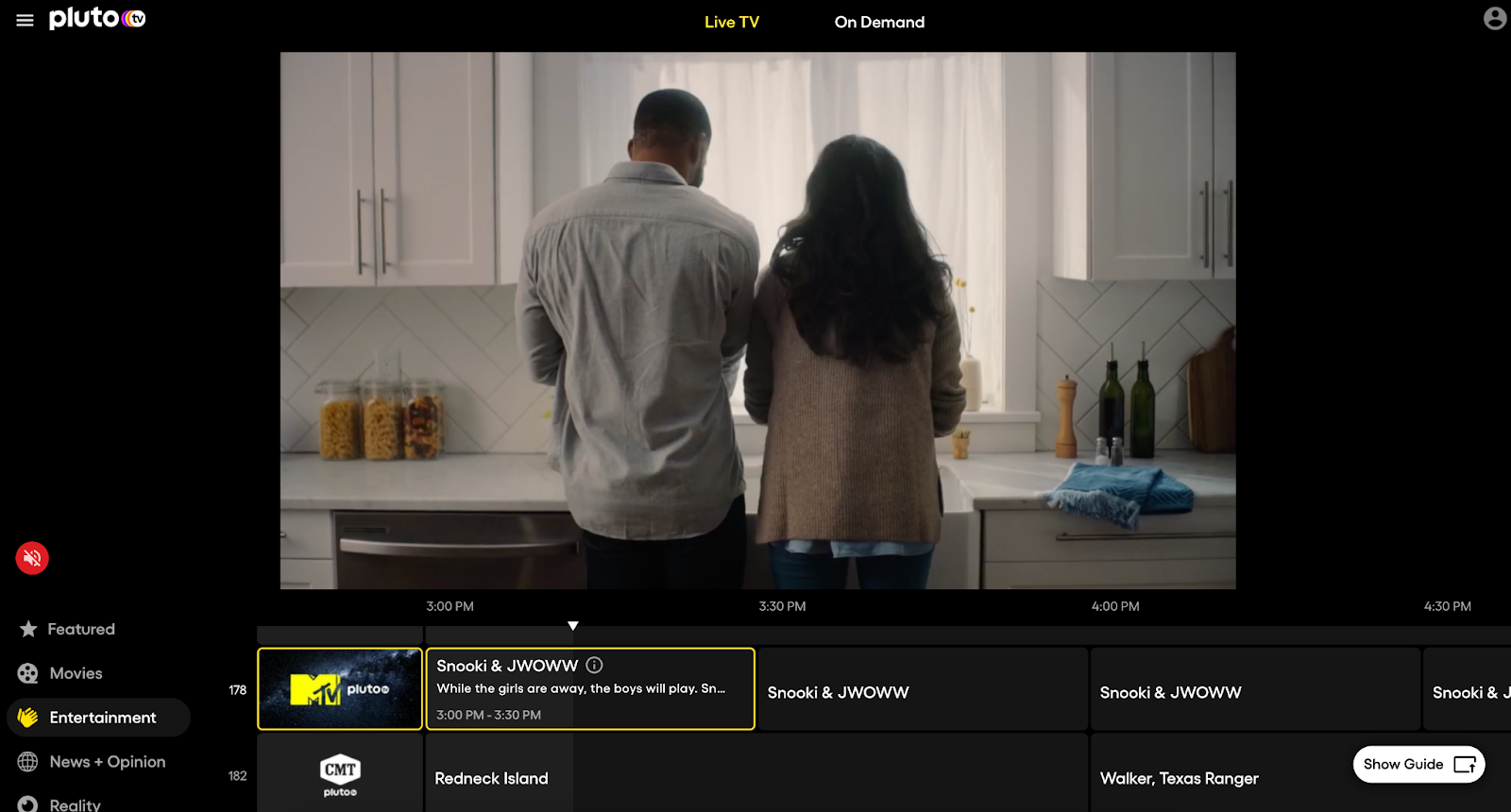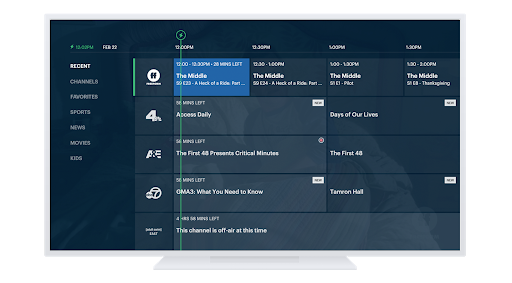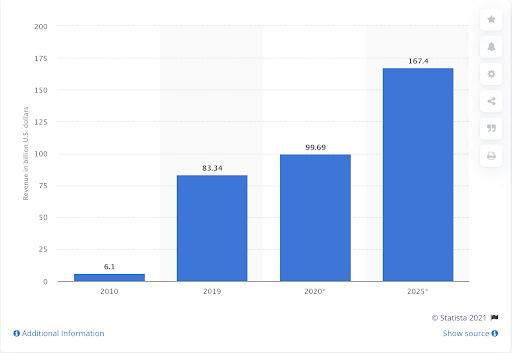How the Rise of VOD Led to an Increase in Linear Streaming and How to Adapt
May 6, 2021
If you haven’t heard of the term OTT by now, there’s a good chance you already know what it is. OTT (Over the Top) refers to streaming content that is delivered via an internet connection. Netflix, Hulu, Disney+, etc. are all OTT channels and you can download the app on your smart TV, mobile phone, or connected TV device.
Video-on-Demand (VOD) refers to the ability to access content at any time. If you are familiar with any of the aforementioned OTT channels, you are probably familiar with VOD, or the ability to search through a library of content and press play to start watching. Hence the name, “Video-on-Demand.” The two main types of VOD are ad-supported (AVOD) and subscription (SVOD).

Linear streaming is very similar to traditional TV because shows are aired during specific time slots, but the difference is linear streams are delivered over the internet through an OTT service, not through a cable provider. They can run 24×7 or in time blocks, such as 4:00 PM – 11:00 PM. Pluto TV is a good example of a linear streaming channel with multiple streams running simultaneously 24×7.

When it comes to OTT, the video-on-demand model usually comes to mind. In fact, being able to choose what to watch and when to watch it has always been the main reason consumers love OTT. But more recently, linear streaming is making a comeback.
The Growth of OTT
OTT was first introduced in 2007 when Netflix made its streaming debut; shortly after, Hulu and others followed suit. The industry grew at an exceedingly fast rate and there are now hundreds of services on the market– each bringing something unique to the table. Check out this blog post from last year that highlights some of the unique OTT Apps available. As of September 2020, over 78% of U.S. households have one or more streaming services and 55% have at least two (source: Leichtman Research Group).
Problem Solving with VOD
As I stated earlier, VOD lets viewers watch what they want, when they want. VOD solved the problem a lot of viewers faced of being too busy to sit down and watch a show or movie during its designated air time; this was especially prevalent in the U.S. where the culture glorifies busyness and values a lack of leisure (Huffpost). Video-on-demand gave these busy viewers the opportunity to catch up on their missed shows, you may also know this by the name of “catch-up TV”.
VOD was not a new idea. Remember DVRs? Viewers were accustomed to controlling their viewing habits and enjoyed the new features and accessibility the OTT VOD platform provided. However, the growing popularity of OTT and the increasing number of services available brought a new kind of challenge to consumers.
The Burden of Choice
Alvin Toffler, an American writer, futurist, and businessman known for his work discussing modern technologies, wrote in his book, Future Shock (1970),
“Ironically, the people of the future may suffer not from an absence of choice, but from a paralyzing surfeit of it. They may turn out to be the victims of that peculiar super-industrial dilemma: ‘Overchoice.'”
Alvin Toffler
This theory from Toffler is what we refer to today as The Burden of Choice. With so much available content to choose from, especially when subscribing to multiple OTT services, the options can become overwhelming. Choosing what to watch may take longer than watching the selected content, if a decision even gets made. VOD may have solved one problem, but it has left us with new challenges to combat.
The Laid-Back Experience
Watching television and movies should be a form of leisure, unfortunately The Burden of Choice took that laid-back experience away from the viewer and turned it into something time-consuming and sometimes stressful. After a long-day viewers just want to sit-back, relax, and watch a good movie without having to work for it first. Linear streaming solves this new problem and gives viewers that laid-back streaming experience they are missing with VOD.
Linear Streaming: FASTs and vMVPDs
FASTs and vMVPDs are two types of linear providers that deliver bundled packages of linear channels.
FASTs, or Linear Free Ad-Supported Streaming TV, are channels delivered with dynamically inserted ads and are completely free for viewers. One of the most popular FASTs, Pluto TV, reported 43 million monthly active users globally in 2020 Q4, an 80% increase year over year. Pluto TV also reported it more than doubled its advertising revenue in Q4 (Cord Cutters News). Other popular FASTs include Xumo, Tubi, Peacock, The Roku Channel, IMDbTV, and Samsung TV+.
vMVPDs, or Virtual Multichannel Video Programming Distributors, are similar to FASTs, however viewers must purchase a subscription package, usually on a monthly, quarterly, or yearly basis. Some examples of vMVPDs are Sling TV, DirecTV Now, PlayStation Vue, Fubo, Philo, YouTube TV, and Hulu Live. Hulu has 34% of the vMVPD market share with a total of 4 million total subscribers as of 2020 Q4 (Backlinko).

As the number of cord-cutters continue to increase, Strategy Analytics predicts spending on subscription streaming services (including VOD and virtual MVPDs) will surpass traditional pay TV by 2024 (source: Fierce Video).
Accepting the Decline of Cable TV
In just 10 years, the OTT global revenue went from $6.1B (2010) to $99.69B (2020) and is estimated to hit $167.4B by 2025 (source: Statista). Big media executives are finally accepting the decline of cable TV and are plotting a new path forward with streaming video. Just in the past year we’ve seen multiple new apps hit the market from big media companies such as Disney+, HBO Max, Peacock, Paramount+, Discovery+, and AMC+.

Choosing Adaptable OTT Vendors
There are new OTT apps launching every month, creating a competitive landscape. The two most vital things to look for when choosing an app vendor is the ability to customize the app for your brand and flexibility.
Be aware of the one-stop-shops that provide everything from app design to video hosting to CRMs. With these vendors, you may have to adjust your content to fit into their pre-made app template and are also required to use their back-end technology, which limits flexibility and scalability.
Also, make sure your app vendor will be able to grow and adapt without having to start over from scratch- which can end up being pricey and time consuming. It’s important to be able to adapt to consumer needs quickly in this industry. As a flexible, non-templated app vendor ourselves, Float Left has seen many of our clients start off small, then add in new features and platforms, or change their monetization strategy once they get a better understanding of their viewers.
Solutions to the Growing Demand
Examples of Big media companies who have adapted to the increased demand for convenience and accessibility of streaming content:
- In 2017 Hulu launched Hulu + Live TV, where subscribers can watch live sports, news, and events on 65+ top channels.
- In November 2020, The Roku Channel added 30+ more free, live and linear TV channels to their line-up.
- In Early 2021, Netflix rolled out a ‘Play Something’ feature which allows the user to press a button and Netflix will automatically play a show or movie based on what they’ve watched before.
Conclusion
OTT is here to stay. The number of U.S. households viewing OTT content year over year is increasing and will soon surpass the declining number of households viewing traditional pay TV. The graph below shows these changes from 2019 to 2020.

We’ve already seen major consumer trends shift in a short amount of time, so it’s important to be prepared to pivot quickly as the needs arise. Partnering with the right technology companies early on could make or break media companies looking to succeed in the OTT industry.